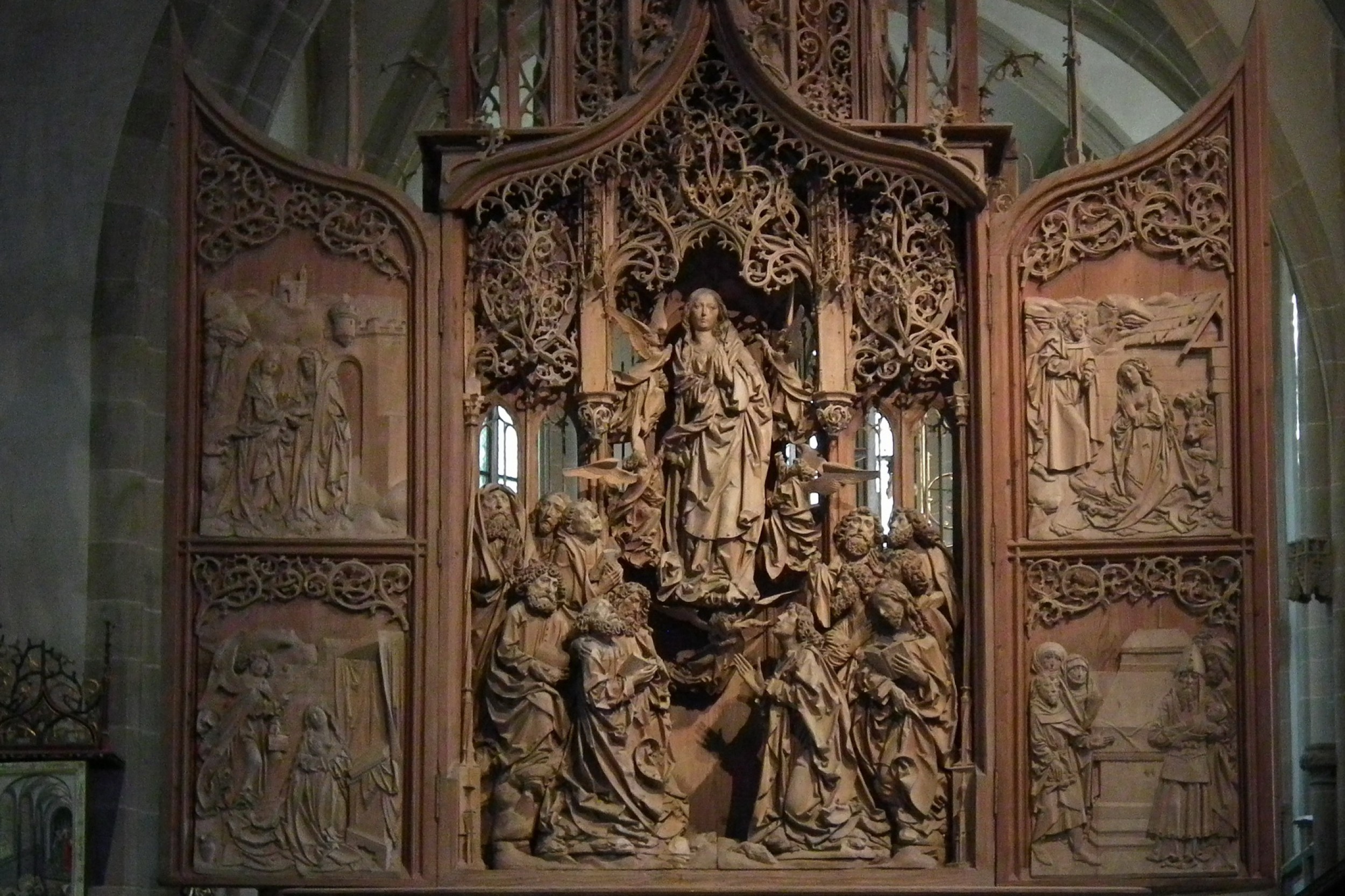
Riemenschneider in situ is a traveling conference that will evaluate works associated with the franconian artist in the context of the original spaces in which they were installed.
In 1980, Michael Baxandall introduced the sculptor Tilman Riemenschneider and his artistic milieu to English-speaking art historians—specialists and non-experts alike—with his book The Limewood Sculptors of Renaissance Germany. This publication appeared just a year prior to the first major exhibition of Riemenschneider’s early works in Würzburg's Mainfränkisches Museum (1981). In the wake of Baxandall's contribution, several major exhibitions, including those in Washington, Nuremberg, and Würzburg, have been dedicated to the sculptor vis-a-vis his contemporaries in southern Germany. These exhibitions and accompanying volumes have promoted inquiry into Riemenschneider's commissions, his workshop practice, and the contemporary artistic climate. The museum instigation of much of the scholarship on Riemenschneider to date has led the sculptor’s works that survive in situ, and are too large, heavy, or fragile to travel, to receive comparatively little scholarly attention.
The Riemenschneider in Situ conference aims to redress this gap in scholarship. In addition to the in situ artworks themselves, we seek to stimulate interest in the physical and discursive spaces of their installation and production. To this end, we encourage papers that probe Riemenschneider’s consideration of pre-existing architecture, devotional and liturgical rituals, or ecclesiastical furnishings before executing his works. How did Riemenschneider accommodate or shape viewer’s movements through these spaces? Have we fully acknowledged the correspondences between products from his workshop and those of common woodworkers and stonemasons? Can we reconstruct any of the sacred spaces in which his commissions, now displaced to museums, once stood? From an historiographic standpoint, especially in light of his mechanical workshop practices, should we reconsider his appellation "late Gothic sculptor" in the regional, in situ company of early-moderns like Albrecht Dürer? Finally, we also welcome papers about his afterlife and any unfamiliar works within and without Franconia, which might bear an ex post facto footprint of his workshop.
In accordance with its stated objectives, the conference will consist of two parts: papers and excursions. Conference papers are open to the public and will be administered on the first day in Rothenburg's Tagungsort Wildbad and the final day in Würzburg. Between the conference days, those who delivered papers will visit specific sites related to the conference in the Franconian region immediately surrounding Rothenburg for further presentations and discussion.

